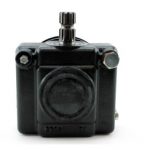LawnEQ is a trusted source for genuine OEM Parts- Shop for the part you need from your favorite manufacturers such as Landpride, Toro, Kubota, and more today on our OEM Parts Lookup Tool!
Last winter, we discussed ways you can help take care of your resident birds during the colder weather. Different types of birds will be interested in different types of feed, and they may also have preference in feeders. In addition, some bird feeds out there should be avoided.
The Right Feed for the Right Bird
There are a number of common seeds that attract birds:
- Black Sunflower Seeds – These are the most common bird seeds, and usually form the base of any feed mix you may find. They appeal to a wide range of birds, including cardinals, sparrows, jays, chickadees, finches, and more.
- Hulled Sunflower Seeds – Simply sunflower seeds without the hulls, this can be eaten by some birds that do not have the ability to crack the hulls of regular sunflowers. This means that, in addition to the birds mention above, it can also attract mockingbirds, wrens, and even woodpeckers
- Thistle Seeds – A small black seed that is especially popular with finches. You need special feeders for these, though, as they are small enough that theey can easily slip through the holes in a tray feeder or tubular feeder.
- Safflower – Very similar to black sunflower seeds, except that starlings and sparrows are not fond of this seed. Many times it is used in a multi-feeder yard to rovide food for birds that may get crowded ut by those particular species.
- Cracked Corn – A cheaper feed, it is also less popular with songbirds. It is more of a ground-based feed, as it is likely to attract pheasants and quail in areas where they live. It will also bring around blackbirds and grackle, so you may want to keep it far away from feeders for small songbirds – grackle have been known to pray on small birds.
In the end, your best bet will likely be to buy a mix that will appeal to the most common birds you see.
Foods to Avoid
Particularly if you buy a mix of seeds, you’ll need to look for ingredients to avoid. Milo and wheat are two common filler types that will not appeal to many birds, and don’t necessarily provide the proper nutrients either. While plenty of people will repurpose stale bread as food for backyard birds, this is also something to be avoided. Bread does not have the proper nutrients or the fat content of many seeds, and will fill the bird up, making it think it is full. This may prevent it from eating food that has the right nutrient balance, and can be harmful to the bird.
Feeder Options
Once you’ve chosen the feed, you need a feeder. Different species will want different feeders, so your best bet is to go with two or three different types. A tray feeder is a given – almost any flying bird will eat from a tray feeder if it is an option. The next best bet are hopper feeders – often referred to as “house” feeders – that offer better weather protection for the feed, although there is less room for birds to perch. Tubular feeders are also very popular, and can either be in the form of plastic tubes with holes in them (for small seed) or wire mesh feeders for larger seeds. Finally, there are the esoteric feeders for specific birds or feed types – suet feeders, mesh socks, nectar feeders, and more. Mix them up – offering only ne type of feeder may limited the types of birds you see.
So tailor your feed and feeders to the type of bird you are hoping to attract, and make sure to keep up on them – allowing a feeder to stay empty for too long may drive the birds to different sources, and dirty feeders or wet feed can be a breeding ground for disease.







